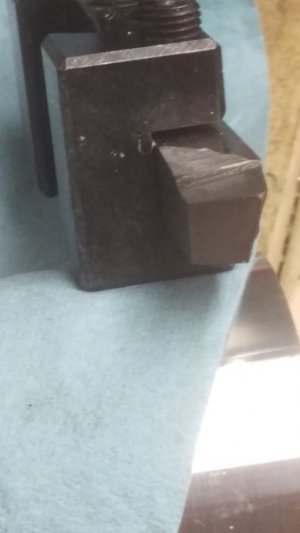- Joined
- Jan 22, 2014
- Messages
- 160
.
I have two sets of cutters,for brass and aluminum and another for everything else. Brass and aluminum are 5/16 square and have no side rake. Steel has about 8° or so of side rake. They also are 3/8" square,makes it easier to pick the correct cutter.Front rake and back rake about 10° or so for all cutters. For the best finish on long turnings the tool has a radius across the entire tool width. Other radius on cutters vary from 1/32" / 1/8" , depends on the stock and how close to a square shoulder needed.
I have ground lathe tools for specialty things in the past. i.e. various boring bits, strange shaped tools for esoteric situations, etc. That said, my go-to turning tools have been HSS inserts from A.R. Warner for a long time now. It felt time to get more of an education in tool angles by grinding my own. One thing that I've long thought about was the difference in adding positive back rake. The HSS insert tool holders are all neutral rake.
A few observations so far. A larger nose radius seems to be needed on my hand ground, 5 degree positive rake tools. For the size of work and DOC typical in my shop, the neutral rake inserts work best with a 1/64" nose radius. I was getting a poor finish with my new tools until I increased the nose radius to more like 1/32". I guess there is some connection to the back rake angle?? I don't know, but it seems to be the most likely option. Curious.
What angles do people like for clearance and back rake? It is a little confusing looking at the usual sources on tool bit angles. They are nearly all referenced to lantern tool posts and holders that already include an angle. I arbitrarily chose 5 degrees for everything. 5 degree side clearance on both sides. 5 degree positive back rake.
I don't see any reason to make excessive clearance angles. 5 degrees seems more than enough, yet I see on tool grinding examples some much larger angles at times. I don't get why.
Back rake. How much can I put on? 10 degrees would seem to be an awful lot, but is it? Nearly all of my machining is steel (free-machining on up to 4140 & tool steels).
Thanks for your thoughts!
I have two sets of cutters,for brass and aluminum and another for everything else. Brass and aluminum are 5/16 square and have no side rake. Steel has about 8° or so of side rake. They also are 3/8" square,makes it easier to pick the correct cutter.Front rake and back rake about 10° or so for all cutters. For the best finish on long turnings the tool has a radius across the entire tool width. Other radius on cutters vary from 1/32" / 1/8" , depends on the stock and how close to a square shoulder needed.


